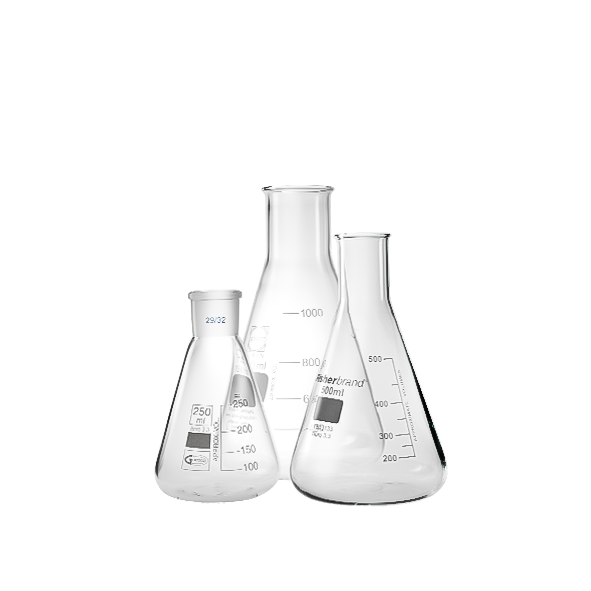Erlenmeyer flasks
- made of borosilicate glass 3.3 or polypropylene
- with narrow and wide neck
- with beaded rim
- with standard ground joint
- with screw cap (GL thread)
- in combination with cork stopper

Erlenmeyer flask made of borosilicate glass 3.3
- Temperature resistant up to +250 °C
- Resistant to acids, alcohols and chemicals, except hydrofluoric acid and concentrated alkali solutions
- dishwasher-safe
Erlenmeyer Flask Made of Transparent Polypropylene
- Ideal for storing and growing cell cultures
- Greater resistance to breakage compared to glass when used in shaking incubators
- Suitable for microwaves
- Cleaning at a maximum of 60 °C is recommended to protect the imprint
- Suitable for contact with food in accordance with Regulation (EU) No. 10/2011

In the laboratory
- For mixing liquids
- Accelerating dissolution processes by swirling or stirring
- Suitable for use with magnetic stirrers
Misappropriated Uses
- As a cork-stoppered, decorative, and hygienic dispenser for peanuts at aperitifs
- As a water or wine carafe
- As a flower vase (see also Useful information)

The Erlenmeyer flask was developed in 1860 by the German chemist Emil Erlenmeyer. Its neck narrows toward the top, reducing the risk of contents escaping uncontrollably when adding liquids or during swirling, stirring, or boiling. Erlenmeyer flasks are also suitable for use with magnetic stirrers.
Tip for Using the Erlenmeyer Flask as a Flower Vase:
Did you know that cut flowers last longer with a copper coin in the water? In the Middle Ages, it was known that water in silver or copper vessels stayed fresh longer, and bacterially contaminated water became drinkable again. Copper and silver ions, with antibacterial properties, reduce bacterial growth, helping to preserve the water and keep cut flowers fresh. A sufficient amount of copper ions dissolve from the coin in the water to produce this bactericidal effect.







